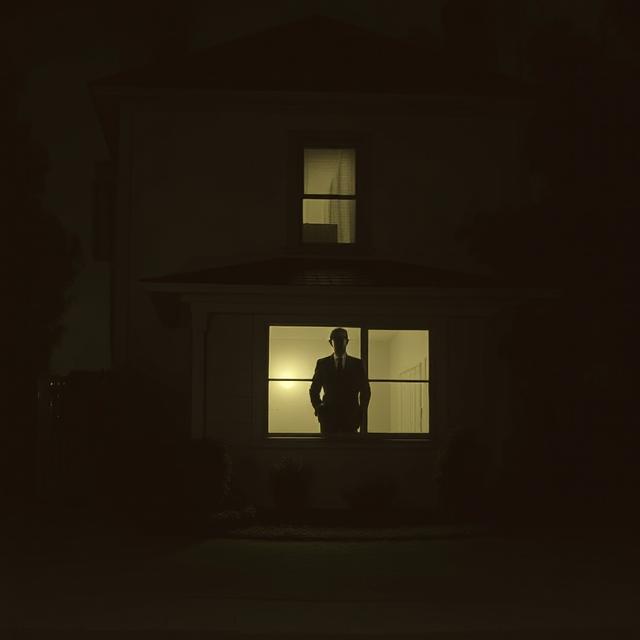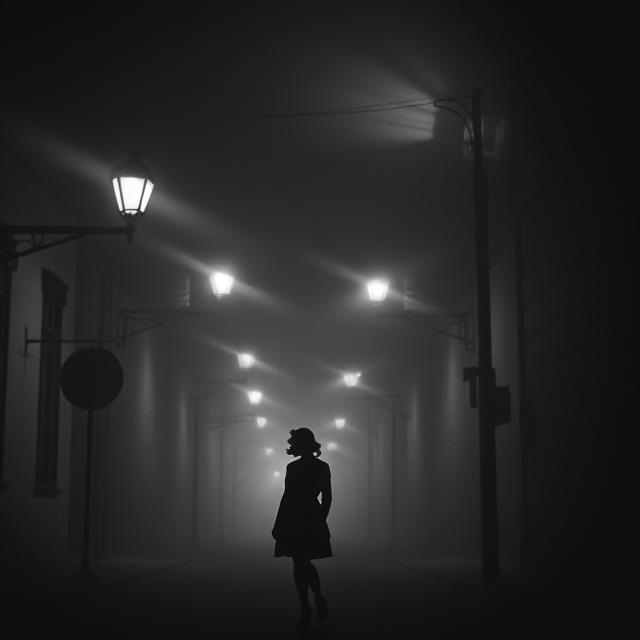The early 20th century, a time often romanticized for its roaring twenties spirit, held its own unique brand of urban shadows and hidden depravities. In August 1922, the seemingly ordinary Los Angeles home of Fred and Marie Oesterreich became the stage for a crime so bizarre and unsettling that it has lingered in the annals of true crime for over a century. Fred Oesterreich was found shot to death in his living room, a diamond-studded watch and a pistol missing, suggesting a robbery gone wrong. However, the truth that slowly unraveled was far more twisted than any simple theft, involving a hidden lover, a bizarre attic dwelling, and, for some theorists, a chilling connection to the infamous Black Dahlia murder. The Icebox Murders, as they became known, not only exposed a sensational love triangle but also raised unsettling questions about a killer who may have walked free, potentially sparking a path to further, more notorious crimes.
Fred Oesterreich, a successful apron manufacturer, and his wife Marie, a vivacious and independent woman, presented a facade of middle-class prosperity in their affluent Los Angeles neighborhood. However, their marriage was reportedly strained, and Marie was known to have a wandering eye. Unbeknownst to Fred, Marie had embarked on a passionate affair with a much younger man named Otto Sanhuber, a sewing machine repairman who was nearly a decade her junior.
Their affair, which began around 1918, quickly escalated into an arrangement of extraordinary and bizarre secrecy. At Marie’s insistence, Otto Sanhuber moved into the attic of the Oesterreich home, living in complete secrecy, just feet above Fred and Marie. He communicated with Marie using flashlights and string, and only descended when Fred was out of the house. For five years, Otto lived as Marie’s “Attic Man,” a silent, hidden observer of their domestic life, sustained by Marie’s trips upstairs with food and supplies. His existence was a carefully guarded secret, even from the Oesterreichs’ neighbors and family.
On the night of August 22, 1922, the clandestine arrangement took a horrific turn. Fred Oesterreich returned home unexpectedly. What transpired next is a chilling account provided by Otto Sanhuber himself. He claimed that Fred, upon hearing noises in the attic, confronted Marie. Fearing discovery, Otto, armed with a .25 caliber pistol Marie had given him for protection, descended from the attic and confronted Fred. A struggle ensued, and Fred Oesterreich was shot five times, dying instantly in his living room.
What happened next cemented the bizarre nature of the case. Instead of fleeing or calling the police, Marie and Otto staged the scene to look like a robbery. They took Fred’s diamond-studded watch and his own .25 caliber pistol (matching the murder weapon). They then locked Fred’s body in a large closet (often mistakenly referred to as an “icebox,” hence the case’s popular moniker) before Otto retreated back to his attic lair.
For the next five years, the “Attic Man” continued to live in the Oesterreich attic, still dependent on Marie, who would continue to bring him food and engage in their secret affair. Fred Oesterreich’s body remained in the closet for days until Marie finally called the police, claiming to have found her husband. Due to the seemingly obvious robbery motive and lack of other suspects, the case went cold, initially ruled an unsolved robbery-homicide.
The secret life of Otto Sanhuber finally began to unravel in 1929. Marie Oesterreich had taken another lover, a lawyer named Herman S. Shapiro, who eventually discovered the “Attic Man” hidden in Marie’s life. Troubled by the bizarre story, Shapiro convinced Sanhuber to come forward and confess to the police.
Otto Sanhuber confessed to Fred Oesterreich’s murder, detailing his life in the attic and the circumstances of the shooting. The revelation of the “Attic Man” shocked Los Angeles and made international headlines. However, due to the peculiar laws of the time, Sanhuber could not be prosecuted for murder, as the statute of limitations for the crime had expired by the time he confessed. He was, however, briefly imprisoned for parole violation.
Marie Oesterreich was also arrested and charged with conspiracy to commit murder. Her trials were sensational, but she was never ultimately convicted, largely due to her ability to manipulate both her lovers and the legal system. The Oesterreich murders remained legally unresolved, a testament to its strange circumstances.
The lack of a definitive conviction for Fred Oesterreich’s murder, combined with the incredibly peculiar facts of the case, allowed the mystery to persist. While Otto Sanhuber admitted to pulling the trigger, questions remained about Marie’s true culpability, her manipulative nature, and the possibility that she might have orchestrated the entire scenario.
The Dark Connection: The Icebox Murders and the Black Dahlia
Decades later, the Icebox Murders gained renewed, chilling attention through the work of Steve Hodel, a retired Los Angeles Police Department (LAPD) homicide detective and the son of Dr. George Hill Hodel, the prime suspect in the notorious 1947 Black Dahlia murder of Elizabeth Short. Steve Hodel, in his extensive research into his father’s alleged crimes, began to draw speculative but unsettling connections between the 1922 Oesterreich murder and his father.
Steve Hodel’s theory is complex and highly controversial, not officially endorsed by the LAPD. However, he posits that the Icebox Murders could have been an early, perhaps even experimental, killing by his father, George Hodel. His arguments include:
- Geographical Proximity: The Oesterreich home was in Los Angeles, an area George Hodel was familiar with.
- Timing: The 1922 murder occurred when George Hodel would have been in his early 20s, a plausible age for a budding serial killer.
- The .25 Caliber Pistol: Steve Hodel claims that a .25 caliber pistol, specifically a Colt, was a weapon of choice for his father in some alleged later crimes. While Fred Oesterreich’s own pistol was the murder weapon, the fact that it was a .25 caliber is noted.
- The “Dress Rehearsal” Concept: Steve Hodel suggests that killers often evolve. The Icebox Murders, with its elements of deception and potential for control (through Marie), could have served as a “dress rehearsal” or an early manifestation of a predatory nature that later escalated into the extreme mutilations seen in the Black Dahlia case. He argues that his father’s medical background would have facilitated the surgical precision seen in later crimes.
- “Disposal” Methods: While not as overt as the Dahlia, the initial concealment of the body in the closet, the staging of the scene, and the overall bizarre nature of the crime hint at a methodical mind.
It is crucial to emphasize that the link between the Icebox Murders and George Hodel remains a speculative theory, put forth by Steve Hodel. There is no direct forensic evidence connecting George Hodel to the 1922 Oesterreich murder. Otto Sanhuber was the confessed killer, even if not prosecuted. However, the theory adds a layer of dark intrigue, suggesting that the killer of the Oesterreichs may not have simply been the “Attic Man” acting in self-defense, but potentially a more sinister, undetected presence who later resurfaced in far more gruesome ways.
The Icebox Murders remain a unique historical oddity, a tale of illicit love, extreme secrecy, and a murder that defied conventional resolution. For some, the shadow of the “Attic Man” obscures a deeper, more chilling reality: that the initial victim was not the last, and that a killer, refined by time and practice, might have emerged from this bizarre crime to haunt Los Angeles for decades to come.
Want to explore the shadows even deeper? For more chilling cases like this, visit SinisterArchive.com, where the legends are real.




